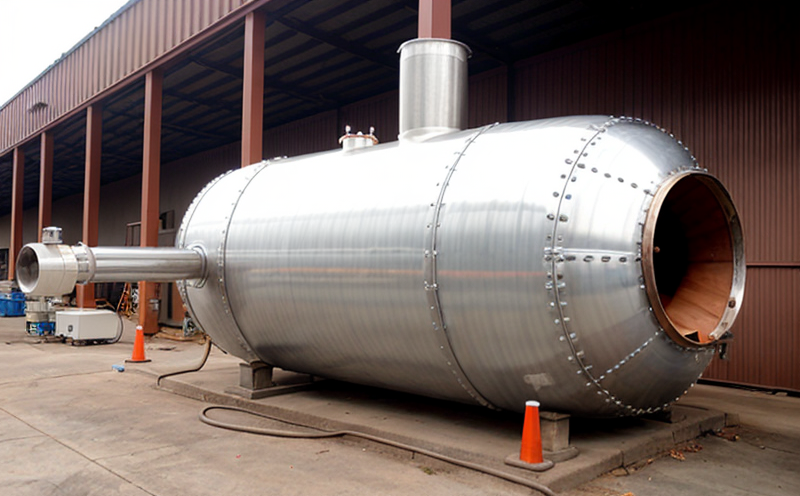Pressure vessel safety inspection
The inspection of pressure vessels and storage tanks is a critical aspect of ensuring industrial safety. Pressure vessels are used in numerous industries such as pharmaceuticals, petrochemicals, power generation, and food processing to store hazardous materials under high pressures. These vessels must be rigorously inspected to prevent leaks, bursts, or other failures that could result in catastrophic accidents.
The primary goal of a pressure vessel safety inspection is to identify any signs of damage, corrosion, erosion, or wear which may compromise the integrity and reliability of the vessel. Inspections are typically conducted at regular intervals as part of routine maintenance schedules and can be performed either during an outage or online without interrupting operations.
Pressure vessels are classified according to their design pressure, temperature, and medium they contain. Common types include cylindrical tanks with hemispherical heads, horizontal cylinders, and spheres. Each type has unique characteristics that affect how it is inspected and maintained. For instance, welded joints in a vessel may require different inspection techniques compared to castings or forged sections.
Inspection methods vary depending on the specific requirements of each application but generally include visual inspections, ultrasonic testing (UT), radiographic examination (RT), liquid penetrant testing (PT), and magnetic particle inspection (MPI). These non-destructive evaluation (NDE) techniques allow engineers to assess the integrity of the vessel without causing damage or altering its structure.
Visual inspections involve a thorough visual examination using magnifying tools like borescopes for internal examinations. UT uses ultrasonic waves to detect flaws within the material, RT employs X-rays or gamma radiation to reveal defects internally, PT involves applying a penetrant followed by drying and developing processes to highlight surface cracks, while MPI applies magnetic fields to identify discontinuities in ferromagnetic materials.
During an inspection, samples may also be taken from the vessel for chemical analysis if there is suspicion of material degradation. These tests can help determine whether any changes are due to normal wear and tear or indicate a more serious issue requiring immediate attention. Compliance with international standards such as ASME Section VIII Division 1/2 (U.S.), EN 13445:2011 (Europe), PED 2014/68/EU (European Union), and ISO/IEC 9712-1:2012 ensures that the inspection meets recognized industry best practices.
The importance of conducting these inspections cannot be overstated. Accidents involving pressure vessels can lead to severe injuries, fatalities, environmental damage, significant property loss, and costly downtime for affected facilities. By adhering to strict guidelines and employing advanced technologies during inspections, operators can minimize risks associated with these high-pressure systems.
Regular monitoring helps maintain the reliability of pressure vessels throughout their operational life cycle. This proactive approach not only enhances safety but also extends the service life of equipment by identifying potential issues early on before they escalate into major problems.
Why It Matters
- Prevents catastrophic failures that could result in loss of life and property damage
- Avoids costly downtime associated with sudden vessel malfunctions or replacements
- Promotes compliance with regulatory requirements set by governing bodies like ASME, EN 13445:2011, PED 2014/68/EU, and ISO/IEC 9712-1:2012
- Ensures consistent quality across all production processes dependent on reliable pressure vessels
- Reduces maintenance costs by addressing issues before they become critical problems
- Maintains public confidence in the safety of industrial operations involving high-pressure systems
The consequences of neglecting regular inspections are stark. Without proper attention, even minor flaws can grow into significant hazards over time. Early detection through comprehensive inspections allows for timely interventions that protect both personnel and infrastructure.
Why Choose This Test
- Expertise in performing ASME Section VIII Division 1/2, EN 13445:2011, PED 2014/68/EU, and ISO/IEC 9712-1:2012 compliant inspections
- Use of state-of-the-art technology including advanced NDE methods like UT, RT, PT, and MPI to ensure thorough examination
- Absence of downtime through online inspection capabilities for certain vessel types
- Comprehensive reporting tailored to meet specific client needs ensuring full transparency about the condition of inspected vessels
- Experienced personnel with extensive knowledge in pressure vessel technology and safety practices
- Commitment to continuous improvement by staying abreast of latest developments in inspection techniques and standards
Selecting a reputable laboratory for your pressure vessel safety inspections is essential. Our team leverages cutting-edge equipment, experienced professionals, and adherence to strict international guidelines to deliver accurate results every time.
Quality and Reliability Assurance
- Strict adherence to ASME Section VIII Division 1/2, EN 13445:2011, PED 2014/68/EU, and ISO/IEC 9712-1:2012 ensures compliance with recognized industry best practices
- Use of advanced NDE techniques guarantees thorough examination of even the most challenging areas within pressure vessels
- Detailed documentation of all inspection findings provides clear evidence of vessel condition for future reference and regulatory purposes
- Continuous training and certification maintenance ensure our inspectors remain up-to-date with current standards and methodologies
- Comprehensive pre-inspection planning ensures efficient use of resources while maximizing the effectiveness of each inspection activity
At [Laboratory Name], we understand the critical role that pressure vessel inspections play in safeguarding lives, assets, and environments. Our unwavering commitment to quality and reliability is reflected in every aspect of our service delivery.





